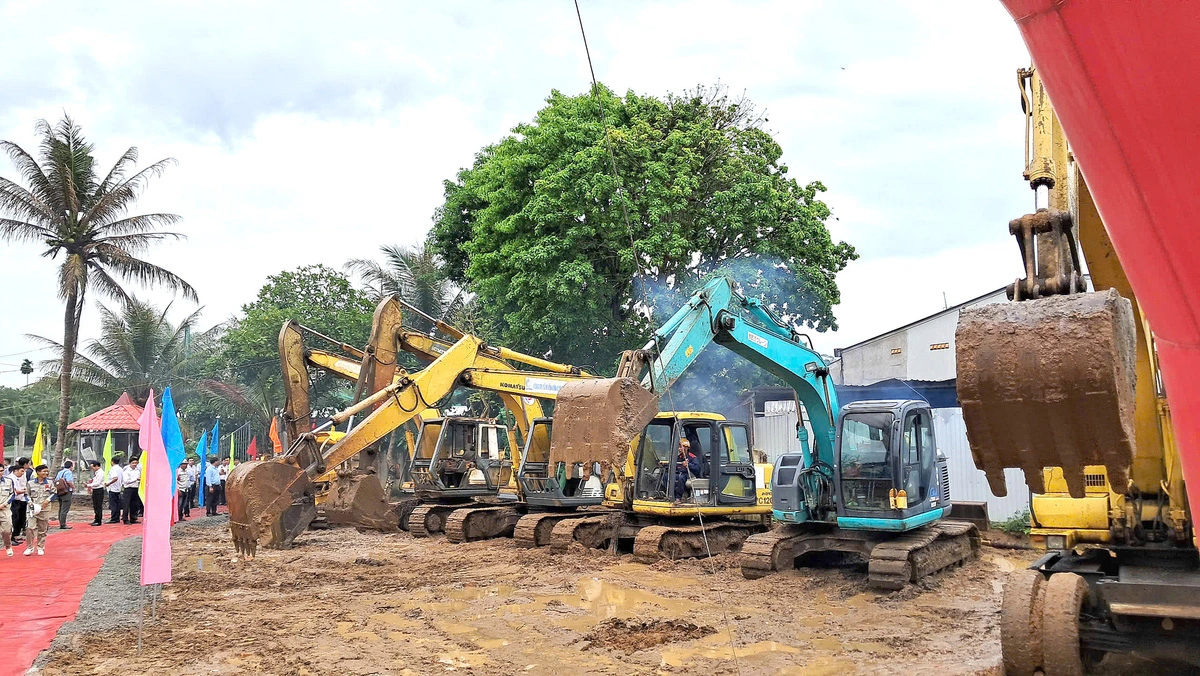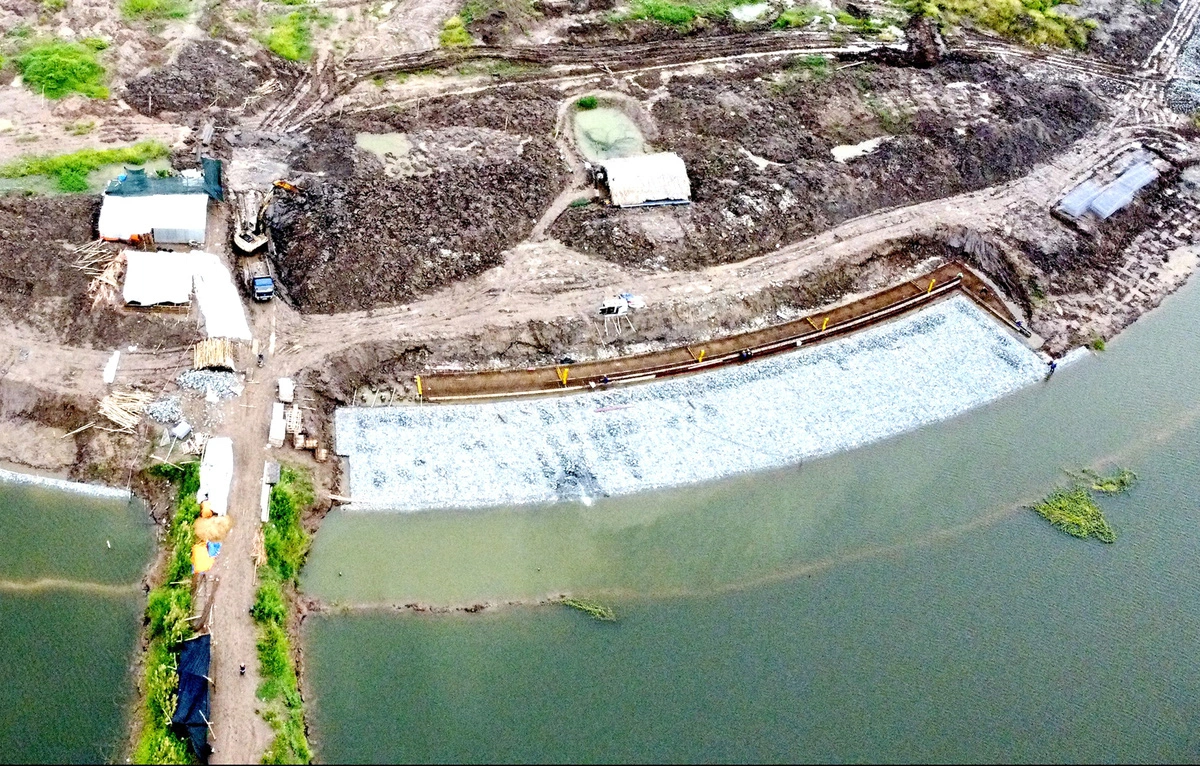Due to concerns over droughts and saline intrusion, localities in the Mekong Delta are rushing to develop freshwater reservoirs.
The provinces which have been most proactive in building reservoirs include Tien Giang, Ben Tre, and Tra Vinh.
Since the end of November, downpours have lessened and heat waves have moved into the region, signaling an upcoming drought.
In Ben Tre Province’s Ba Tri District, laborers are working tirelessly on the Lac Dia reservoir project.
According to Nguyen Van Dien, director of Ben Tre Province’s agricultural and rural development project management board, the project broke ground in late 2022 and is expected to be finished in 2025.
Enough of the reservoir has so far been completed that it will be able to meet water storage demands this year.
Ben Tre authorities developed the first reservoir in Ba Tri District in 2017 in response to the 2015-16 drought season which led to saltwater intrusion across Ben Tre Province. Ba Tri District suffered the biggest loss due to its proximity to the sea.
Ben Tre later spent VND85 billion (US$3.3 million) building its first fresh water reservoir on the Lap Canal.
The reservoir, which has a capacity of over 800,000 cubic meters of water, was designed to serve the daily activities for some 20,000 residents and production on over 13,000 hectares of agricultural land.
It was the first and largest freshwater reservoir in the Mekong Delta.
In 2022, the administration in Ben Tre started work on the Lac Dia reservoir, which would span 124 hectares and carry a price tag of over VND352 billion ($13.9 million).
Once finished, Ba Tri District’s reservoirs will be capable of storing more than three million cubic meters of water.
Other provinces follow the trend
At the recent ground-breaking ceremony for a reservoir along the Lang The River in Cang Long District, Tra Vinh Province, Nguyen Trung Hoang, vice-chairman of the provincial People’s Committee, said the project was expected to ensure water security for local production, daily life, industries, and services in the province.
The project, which will boast a capacity of over 10 million cubic meters, carries an estimated investment of VND1.33 trillion ($52.5 million) price tag, including VND1.189 trillion ($46.8 million) sourced from the province’s budget and some VND141 billion ($5.6 million) from state coffers.
The project was scheduled for completion by April 2026.
 |
| Tra Vinh Province in southern Vietnam has broken ground on the Lang The reservoir with a price tag of over VND1.33 trillion ($52.5 million). Photo: Mau Truong / Tuoi Tre |
Meanwhile, Tien Giang Province has proposed developing freshwater reservoirs in Go Cong Tay District, Go Cong City, Go Cong Dong District, and Tan Phu Dong District, said Nguyen Duc Thinh, deputy director of the provincial Department of Agriculture and Rural Development.
The province encountered a shortage of water for daily activities and production during the 2024 dry season.
The southernmost province of Ca Mau has also put a reservoir in U Minh District into use.
The 3.8-million-cubic-meter reservoir carried a price tag of VND248 billion ($9.8 million).
The reservoir is expected to provide freshwater to 11,000 households in U Minh and Tran Van Thoi Districts and store water for fighting forest fires and supporting agricultural production.
Long An Province has submitted a plan to the Ministry of Agriculture and Rural Development to build a VND700 billion ($27.6 million), 140-hectare freshwater reservoir in its Dong Thap Muoi area.
If approved, the reservoir will serve nearly 5,000 hectares of production and aid in fighting forest fires.
An Giang Province has also proposed a freshwater storage system worth some VND3.2 trillion ($126.3 million).
The 3,000-hectare project will be able to store around 94.53 million cubic meters of water to serve 30,000 hectares of farmland in An Giang Province, Kien Giang Province, and Can Tho City.
According to Nguyen Huu Thien, building freshwater reservoirs can aid coastal provinces in times of drought, but technical issues should be taken into account during the development of such reservoirs to insure they aren’t affected by saltwater intrusion.
Provinces should weigh the pros and cons of centralized large reservoirs versus scattered smaller reservoirs, as large ones are favorable in terms of management and water treatment plant installation, but the distance from these reservoirs to users is long, which raises the price of the water used.
They should also calculate the volume of water lost through surface evaporation and soil seepage.
Water for daily life and production should be separated clearly as water for production does not meet safety standards for daily activities, the expert added.
Like us on Facebook or follow us on Twitter to get the latest news about Vietnam!




















































